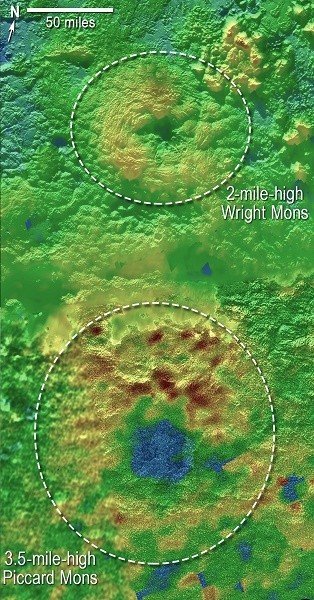NASA's New Horizons spacecraft just revealed the latest evidence of two possible volcanoes based on the images from the historical Pluto flyby last July.
The photos have revealed that there are two mountains in the dwarf planet's southern polar region with roughly shaped circular depressions that resemble craters in their centers. According to Oliver White from the NASA's Ames Research Center, these are apparently big mountains that possess large holes in their summit and typically, on Earth this could only mean volcanoes.
The NASA New Horizons team believes if they are not like volcanoes on Earth that normally erupts with lava then these geological formations can be classified as cryovolcanoes that spew icy slush that contains water, ammonia and nitrogen or methane.
According to Jeff Moore from NASA's Ames Research Center, this is not yet enough evidence to announce that New Horizons already discovered volcanic constructs on Pluto however, these appear to be extremely suspicious as the team are monitoring them closely.
If these are indeed possibly ice volcanoes, this could mean that an internal heat source emanating from the core may originate from radioactive decay of elements that are created inside the dwarf planet some 4.5 billion years ago, maintaining the ice below the surface with enough warmth to make it flow.
These two mountains are known as Wright Mons and Piccard Mons and reach a height of two to 3.5 miles above the surface where it is still unclear to scientists if these volcanoes are still active.
To date, the New Horizons spacecraft continues to send a deluge of data from its recent Pluto flyby back to mission ground control on Earth however, this process will take more than a year to complete as only 20 percent of data and observations have been received by scientists.
Since New Horizons is speeding toward its new target, an icy body called 2014 MU69 which is more than a million miles from Pluto, this distance prevents faster data transmission from Pluto back to Earth as bandwidths become limited for communications.



























